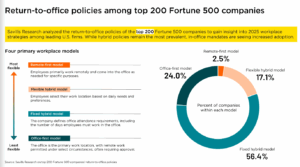Florida Industrial Still Hasn’t Run Out of Gas
Four years after the global pandemic, Florida’s industrial real estate market continues to boom, fueled by a combination of demographic shifts, strong economic fundamentals, limited supply and increasing investment activity. The following analysis explores the key factors behind why the Sunshine State’s capital markets show no signs of slowing down.
Why Florida?
Florida has become a magnet for both domestic and international migrants, with approximately 1,200 people moving to the state daily. The U.S. Census Bureau ranks Florida as the top state for net migration in 2022, a trend fueled by the state’s affordability and high quality of life.
This influx of new residents is complemented by Florida’s business-friendly environment, including no corporate income tax on limited partnerships or S-corporations and no state income tax. These factors have contributed to Florida ranking fourth in the nation for business tax climate and second for trailing three-year job growth.
READ ALSO: Sale-Leasebacks vs. Commercial Loans
Conversely, despite being the third most populous state in the nation, Florida remains severely underserved in terms of industrial inventory. Among states with more than 10 million residents, Florida ranks second only to New York in terms of industrial square footage per capita. To put this in perspective, Florida’s total state inventory of industrial space is smaller than that of the city of Atlanta alone.
Furthermore, introducing new supply to meet this demand is no simple task. Beyond the obvious land constraints of being a peninsula surrounded by water, Florida faces two major hurdles in expanding its industrial footprint. Infill sites have historically favored residential development, a trend expected to continue due to higher returns. Meanwhile, larger bulk sites along Florida’s major thoroughfares often present developers with challenging “wet” site conditions, requiring costly fill and infrastructure improvements that can render projects economically unfeasible.
These high barriers to entry and market performance speak for themselves. As of Q2 2024, core vacancy rates across all major Florida markets were below 5 percent, with all major markets experiencing double-digit rent growth over the trailing 24-month period and positive year-to-date net absorption.
Capital markets activity and investment trends
These favorable conditions have translated into accelerated investment sale activity, with the historically slower summer months seeing a 38 percent year-over-year increase. The second quarter of 2024 alone saw total sales of $1.55 billion, putting Florida on track for an annual rolling four-quarter volume of approximately $8.8 billion, levels last seen in 2021 and 2022.
The market is also witnessing a trend towards larger deals and the re-emergence of portfolio sales. Over the past 24 months, 14 trades exceeding $100 million have successfully closed, with several more in various stages of marketing or negotiation. This increase in large-scale transactions underscores the growing confidence of investors in Florida’s industrial market.
Perhaps most tellingly, new high-water marks in sale prices per square foot are being set across the state. South Florida has seen sales reach $315 per square foot, while Central Florida and Jacksonville have hit $220 and $180 per square foot, respectively.
These record-breaking prices not only reflect strong market fundamentals but also highlight the intense competition for quality assets. Adding to this competitive landscape, each investment opportunity has attracted two to three new-to-market investors, signaling a broadening and diversification of the buyer pool. Historically, these new-to-market investors would have been South and Central American-based investors. What’s different this time is that all new groups are domestic—mostly Northeast and West Coast-based.
Where are the opportunities for investors?
Looking ahead, two key opportunities in the market stand out. First, there is value in acquiring properties with “tweener” weighted average lease terms in the seven- to nine-year range. These opportunities can be financed with positive leverage, typically have strong credit tenants and face less competition during marketing processes, potentially leading to better yields for investors.
Second, with construction starts at relatively low levels across the state and leasing fundamentals remaining strong, outsized returns are anticipated for developers and their limited partners who focus on smaller, infill light industrial developments.
Heading into 2025
Florida’s industrial sector is poised for continued expansion, offering attractive prospects for investors, developers and businesses alike. The unique combination of demographic tailwinds, economic incentives and supply constraints creates a compelling narrative of growth and opportunity in the Sunshine State’s industrial real estate market.
Cody Brais is senior director and co-lead for Florida industrial investment sales and advisory at JLL. JLL is a regular Viewpoint contributor. Their latest article can be found here.
The post Florida Industrial Still Hasn’t Run Out of Gas appeared first on Commercial Property Executive.




